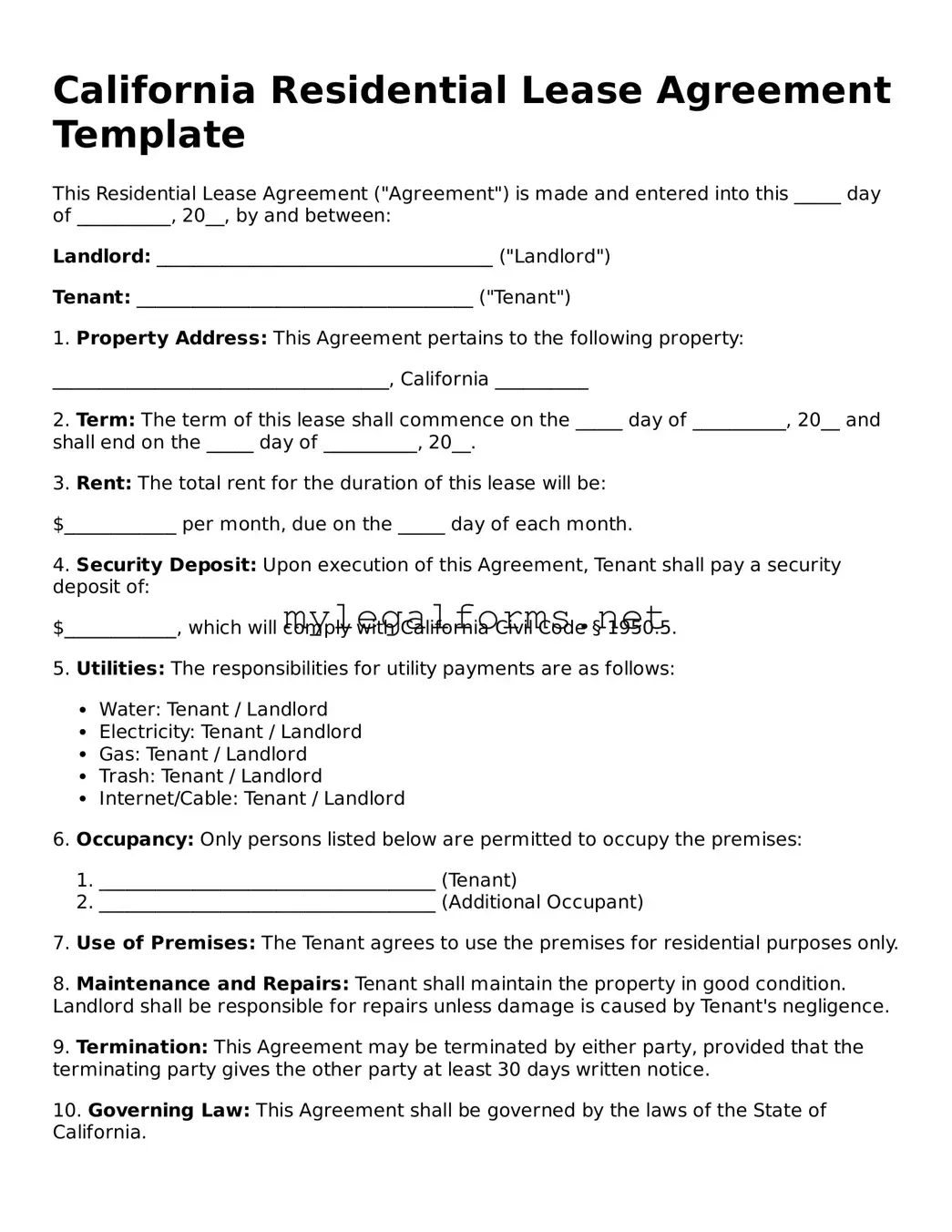California Residential Lease Agreement Template
This Residential Lease Agreement ("Agreement") is made and entered into this _____ day of __________, 20__, by and between:
Landlord: ____________________________________ ("Landlord")
Tenant: ____________________________________ ("Tenant")
1. Property Address: This Agreement pertains to the following property:
____________________________________, California __________
2. Term: The term of this lease shall commence on the _____ day of __________, 20__ and shall end on the _____ day of __________, 20__.
3. Rent: The total rent for the duration of this lease will be:
$____________ per month, due on the _____ day of each month.
4. Security Deposit: Upon execution of this Agreement, Tenant shall pay a security deposit of:
$____________, which will comply with California Civil Code § 1950.5.
5. Utilities: The responsibilities for utility payments are as follows:
- Water: Tenant / Landlord
- Electricity: Tenant / Landlord
- Gas: Tenant / Landlord
- Trash: Tenant / Landlord
- Internet/Cable: Tenant / Landlord
6. Occupancy: Only persons listed below are permitted to occupy the premises:
- ____________________________________ (Tenant)
- ____________________________________ (Additional Occupant)
7. Use of Premises: The Tenant agrees to use the premises for residential purposes only.
8. Maintenance and Repairs: Tenant shall maintain the property in good condition. Landlord shall be responsible for repairs unless damage is caused by Tenant's negligence.
9. Termination: This Agreement may be terminated by either party, provided that the terminating party gives the other party at least 30 days written notice.
10. Governing Law: This Agreement shall be governed by the laws of the State of California.
IN WITNESS WHEREOF, the parties hereto have executed this Agreement as of the date first above written.
Landlord Signature: ________________________________ Date: ______________
Tenant Signature: _________________________________ Date: ______________
